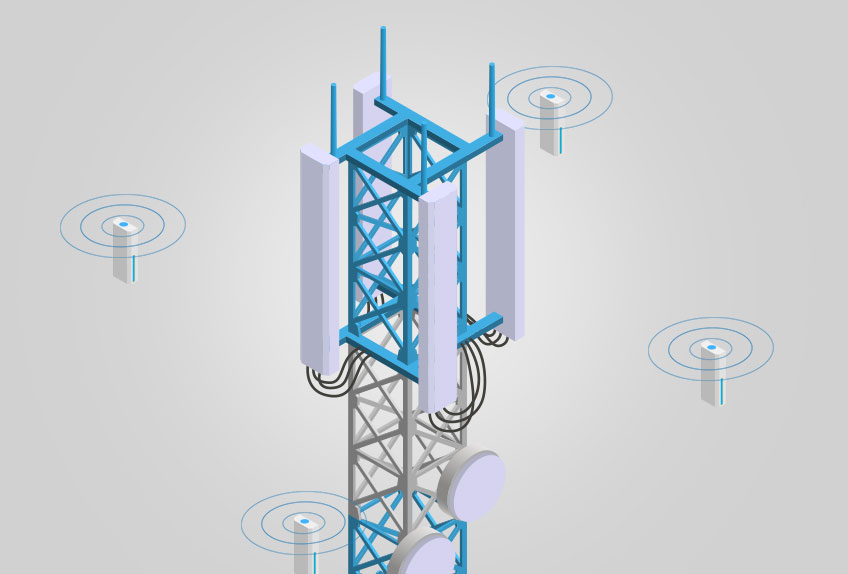Technology has seen astounding advancements in the past decade. There has been a significant shift in how we use our wireless devices. Today, there is an ever-rising demand for indoor mobile connectivity and DAS solutions have quickly turned into a prerequisite for businesses and buildings with coverage challenges. This is where Hybrid DAS has proven to be a great solution.
What is Hybrid DAS?
DAS or Distributed Antenna Systems are majorly categorized into three types – Active, Passive, and Hybrid. Among these, Hybrid DAS is considered to be the best. It is an excellent combination of active and passive systems, leveraging both coaxial cables and fiber optic cables for signal transmission across a building.
Hybrid DAS is leveraged to improve the cellular or wireless coverage both outdoors and indoors for example tunnels, hotels, airports, subways, business houses, hospitals, etc. With its capability to fuse the best in breed technologies of both the active and passive DAS systems, Hybrid DAS is considered a preferred choice among various enterprises.
How Hybrid DAS Functions?
In a Hybrid DAS system, the analog Radio Frequency (RF) signal from the source is transformed or converted to a digital signal. The digital signal is then transmitted to different floors of a building. On each of these floors, a Remote Radio Head Unit or RRU is installed. The transformed digital signal is distributed via Ethernet cables or fiber optic cables to the RRU. The RRU in turn then transforms the digital signal once again to the analog signal. The multiple antennas on each of the floors of the building receive the analog RF signal via coaxial cables and the other passive elements.
Hybrid DAS receive signals from three types of sources namely.
- Repeaters or Off-Air Antenna – They are placed at the roof of a building, and are used to send and receive signals from a mobile or cellular carrier.
- BTS or Base Transceiver Stations – They connect to the cellular service provider’s network through fiber optic cables.Many BTS stations may be installed for one mobile carrier.
- Small Cells – They generate high-quality signals while they connect to the cellular networks leveraging internet connectivity and creating secure tunnels.
Benefits Of Using Hybrid DAS
The benefits of Hybrid DAS are now being realized well by building owners and businesses. These include
- The design and installation of Hybrid DAS is fairly simple.
- The signal production and transmission is comparatively better.
- Covers a larger area than active DAS.
- Signal loss is rare.
- Cheaper in cost related to installation and maintenance.
- Require less number of RRUs.
- There is no limitation to the length of the cables being used in the Hybrid DAS system.
- Works better in a medium-sized building or area.
Applications of Hybrid DAS
With the advent of modern and emerging technologies, the rise in demand for the availability of high coverage cellular signals is a necessity. And more importantly, indoor cellular coverage is a prerequisite in today’s world. A Hybrid DAS system offers such advantages in cellular signal distribution and transmission, making it necessary for modern businesses and enterprises especially those in medium-sized buildings.
The technology by which Hybrid DAS systems transmit signals throughout the building to the different floors is preferable; the reasons being the usage of low loss fiber for signal distribution, low installation cost, and minimal signal loss. Hybrid DAS systems are ideals for any building experiencing unusual problems in signal reception and transmission.
Since the Hybrid DAS system leverages the power of both low-power and high-power mediums of signal transmission, it is being widely designed to be used in corporate campuses, college campuses, sports venues, and other buildings that require both outdoor and indoor coverage.
Interesting Facts about Hybrid DAS
Some of the interesting facts and capabilities of Hybrid DAS are:
- A solution for resolving signal coverage, transmission, and distribution issues for 5G, 4G, 3G, and LTE.
- Approved by major cellular carriers or service providers.
- Applicable for buildings as bigas 200,000 square feet.
- High signal quality with a maximum gain of 100 DB.
- Preferred in small and medium-size enterprises.
- Secure and safe for voice and data transmission over the network.
- Remote monitoring of end-to-end signal distribution and coverage.
- Large Antennas can be avoided, instead small cell devices can be used.
Conclusion
The modern cellular world has been undergoing a tremendous boost in terms of offering state-of-the-art features, high coverage, noiseless signal transmission, and smooth network connectivity. Hybrid DAS is the choice of the hour in offering the best-in-class solution for seamless cellular coverage. This is the main reason it is approved by digitally scalable enterprises and organizations opting for a high-end, cohesive network for their business operations. Even residential buildings are in tune with the exclusive advantages of Hybrid DAS and its capacity.



Post a comment